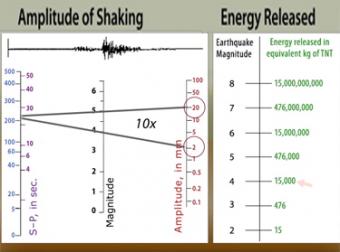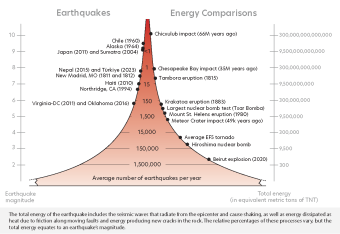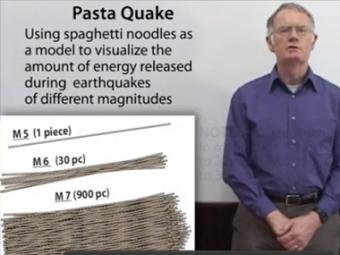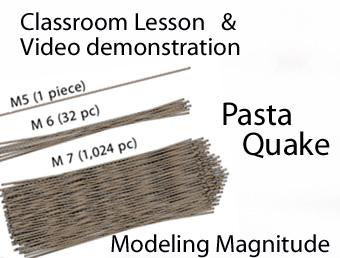1min 52s Novice
From the NOAA site: Tsunami warning center scientists usually measure an earthquake's "size" with the moment magnitude scale rather than the older but more famous Richter magnitude scale. The moment magnitude scale is better suited for measuring the "sizes" of very large earthquakes and its values are proportional to an earthquake's total energy release, making this measurement more useful for tsunami forecasting. Moment magnitude numbers scale such that that energy release increases by a factor of about 32 for each whole magnitude number. For example, magnitude 6 releases about 32 times as much energy as magnitude 5, magnitude 7 about 32 times as much as magnitude 6, and so on. This animation graphically compares the relative "sizes" of some 20th and 21st century earthquakes by their moment magnitudes. Each circle's area represents its relative energy release, and its label lists its moment magnitude, its location, and the year it happened
The Pacific Tsunami Warning Center (PTWC) is one of the United States' two tsunami warning centers operated by its National Weather Service to monitor the world's oceans 24/7 for tsunami hazards, respond to tsunamis with appropriate alerts, develop new tsunami hazard detection techniques, and inform emergency managers and the public about their operations and tsunami science. PTWC is primarily responsible for protecting Hawaii, U.S. Pacific territories, and nations participating in the Pacific and Caribbean tsunami warning systems. For more information about PTWC please see our official site at http://ptwc.weather.gov/

The "moment magnitude" scale has replaced the Richter scale for large earthquakes. Scientists have developed far-more sensitive seismometers that, with faster computers, have enabled them to record & interpret a broader spectrum of seismic signals than was possible in the 1930's, when the Richter magnitude was developed. Find out what scientists learn from seismograms.

Earth is an active place and earthquakes are always happening somewhere. In fact, the National Earthquake Information Center locates about 12,000-14,000 earthquakes each year! This fact sheet illustrates information on the frequency of earthquakes of various magnitudes, along with details on the effects of earthquakes and the equivalent energy release.

Understanding the magnitude change, thus the relative energy released from say, magnitude 7 to magnitude 8 can be challenging. Dr. Robert Butler (Univ. of Portland) uses spaghetti to illustrate the concept by breaking pasta to show how each step up in magnitude represents a huge jump in the size of the pasta bundles. Each step in magnitude is represented by 32 times more spaghetti noodles.

Learn about the earthquake magnitude scale and changes in the amount of energy released at each step by breaking different size bundles of uncooked spaghetti noodles! Students can both see and feel the differences in the energy released from a M4 - M8 quake.
We encourage the reuse and dissemination of the material on this site as long as attribution is retained. To this end the material on this site, unless otherwise noted, is offered under Creative Commons Attribution (CC BY 4.0) license